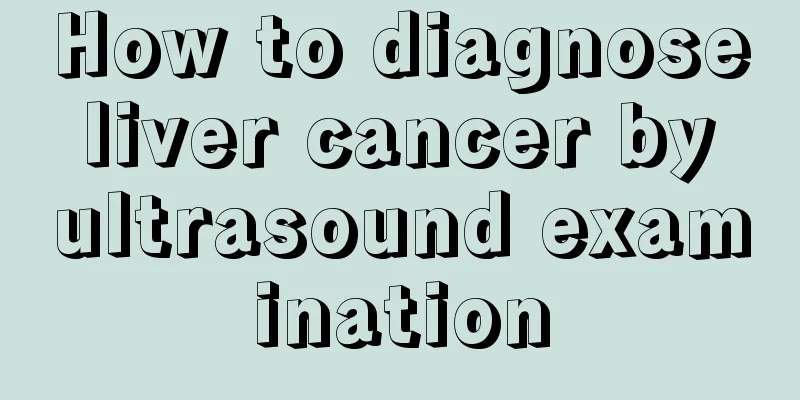How to diagnose liver cancer by ultrasound examination

|
Conventional ultrasound examination has now become the preferred method for screening liver space-occupying lesions. The most commonly used examination in hospitals is type B ultrasound examination, referred to as B-ultrasound. How it works It uses the different signal light spots generated by the reflection of sound waves from different tissues of the human body to form cross-sectional images of the human body. These images can intuitively show the internal anatomy of human organs, including the size of the organs, the shape of the blood vessels, the presence or absence of space-occupying lesions inside, as well as the shape, texture, and size of the lesions. It has unique advantages in distinguishing between solid and liquid spaces. Diagnosis Ultrasound imaging is now indispensable for the diagnosis of liver cancer. Liver cancer tissue has lost the normal structure of liver tissue. Under ultrasound, it can be seen that the cancer tissue presents different echoes compared with the surrounding normal liver: small liver cancers often present as mixed hypoechoic areas, and there is often a liquefied necrotic area in the center. After the emergence of color Doppler ultrasound, it is possible to distinguish liver cancer from liver hemangiomas and other benign intrahepatic lesions by detecting the blood supply of liver space-occupying lesions. If color Doppler detects the arterial blood flow spectrum and the blood flow index exceeds 0.7, this is an important basis for diagnosing liver cancer.New Technology In recent years, contrast imaging technology has been combined with ultrasound imaging to accurately display the characteristics of blood supply inside the tumor. For example, after injection of ultrasound contrast agent, significant enhancement can be seen in the liver cancer nodules in the arterial phase, while the lesions quickly become lower echoes than the surrounding liver parenchyma in the portal venous phase. Ultrasound contrast imaging has further improved the accuracy of ultrasound diagnosis of liver cancer and can accurately distinguish benign lesions from malignant tumors. |
<<: Pay attention to the early symptoms of pancreatic cancer
>>: Who are the most susceptible groups to pancreatic cancer
Recommend
What are the symptoms before death from advanced liver cancer? Five common symptoms before death from advanced liver cancer
When it comes to the symptoms before death in the...
What are the common dietary precautions for pancreatic cancer
Pancreatic cancer is a relatively common disease ...
What are the treatments for cardiac nerve disorders?
The treatment of cardiac nerve dysfunction includ...
Chlorpheniramine usage and dosage
The drug chlorpheniramine is mainly used to treat...
Is there still alcohol after boiling fermented glutinous rice?
There will still be alcohol in the fermented glut...
What are the side effects of radiofrequency ablation for liver cancer? These are
Liver cancer, a malignant tumor, is a very scary ...
What is the most effective treatment for liver cancer? Minimally invasive interventional treatment is the first choice for confirmed liver cancer
There are about 300,000 new liver cancer patients...
Methods of postoperative treatment for breast cancer
What are the treatment methods after breast cance...
Spitting blood at breakfast
We all know that when we wake up every morning, w...
Medicine for growing endometrium
The endometrium is extremely important for women....
Can colonoscopy examine the small intestine?
Colonoscopy is also a widely used intestinal exam...
How to avoid nursing misunderstandings about testicular cancer
Although testicular cancer is a common phenomenon...
Is paronychia contagious?
Paronychia is a disease in which the affected are...
Hemorrhoids with hard cores are actually prolapsed hemorrhoids
Hemorrhoids are also known as hemorrhoids. There ...
What to do if you have a severe headache after drinking
Although drinking is a common way of socializing,...









